Leaderboard
Popular Content
Showing content with the highest reputation on 06/25/20 in all areas
-
4 points
-
As a dentist, I have been using binocular loupes for almost 20 years. But it's just unnatural to use it for watch repair. When doing watch repair, I prefer to hunch up with the watch right in front of my nose, with wrist and elbow supports. I find that this gives me the best stability, especially after a cup of coffee. And binocular loupes have many designs. The 1 in the picture might not be suitable for everyone. It offers adjustable interpupillary distance, but there is no adjustment for declination angle and optical plane height. So unless your face fit the frames perfectly, the loupes might not work for you.3 points
-
Hi The third wheel is out of true causing bad inlerlocking of the teeth with its neighbours, If you able to remove and straighten the wheel (re poise) and re fit or alternativly replace the wheel I will be a worker, If you are in the UK Cousins UK watch parts is the place to look of Stateside Esslingers Jules Borel Otto Frei all material houses. Yes that is the beat adjuster the rate is by adjusting the screw on the lyre spring adjuster. If we sound a bit short at times we are only trying to Point you in the right direction diagnose the fault and recommend procedures for you to do to help things along. You have done well enough to get this far . So well done2 points
-
Hi These are from a paper tape machine but the traces are the same as the electronic as the timegraphers intermeret the sound pattern of the escapement. The witschi document goes int detailed analasys of the escapement and how the sound is picked up and separated. hope you find them interesting. Timing-Machine-Charts.PDF Witschi Training Course.pdf2 points
-
2 points
-
Hello, everybody. I wanted to share my restoration stories that I have done for a long time and thrown into my archive. First I discussed the Atomic Mars 71 Brand using Valjoux 7734. As it was seen, scratch and dial is broken. To begin with, I tried to brush the Case as Brushed and make it the first day. If it is decorated, I polished and re-painted the indexes (with acrylic paint). I usually do this in three layers so that the paint is not deleted in a short time. I replaced the case buttons and tubes with aftermarket buttons. Since the condition of the dial was in very poor condition, I had it re-painted. The quality is not so good. In Turkey, unfortunately, not doing the job well. Caliber 7734 (Valjoux) is a special and robust mechanism for me. With good maintenance and lubrication, you can reduce deflection values up to 3-4 seconds per day. I added a short timelapse video about it :) As a result, such a result came before us. Thank you Taskin https://www.youtube.com/watch?v=XKH6yTKUfpM1 point
-
I'm attaching a PDF and skipped an image out of the PDF. This is from time module basically the OEM division a Seiko. This is where it does show that you can manually wind at least their watches and I/O everyone does it with their Seiko watches but I do in the local watchmaker who is concerned about it and would prefer to shake the watch like 1 million times because does take a lot of shaking not just a few seconds to wind the watch up. Time Modual NH35_TG Cal.NH3 Series.pdf1 point
-
If you are interested in history and watches I do recommend to read his all other articles. Horology is his hobby and he spends the time to tell you a story rather than just show you how to service something or how to bring something back to life again. You can have a glimpse of the closed eastern block and the people living in it. There is a story form the WWII, there are more recent stories. He shares his knowledge with everybody without earning a penny for it. Truly unique and amazing.1 point
-
I think it would be fair to assume that if you don't know to wind up a watch before using a timegrapher, then you probably shouldn't bother trying to use a timegrapher.1 point
-
as you are new to the group is this your first watch your servicing? I seem to be having eyesight problems and I'm not seeing the photo? One of the problems in watch repair is assuming that cleaning will fix the problem. So if the watch stopped in the past and wouldn't run at all and cleaning properly in all the proper lubrication etc. hasn't fix the problem then whatever the original problem is probably still there. Then when you reassembled and discovered the problem is the automatic assembly currently on the calendar etc.1 point
-
Hi I must admit that i also some times assume too much and give way too much credit to the the knowledge of the poster, a human failure i suppose.1 point
-
is why I usually always asks the background history and make the wild assumption that somebody timing of watch would grasp that they actually supposed to wind it up even if it is a Seiko and doesn't have a crown for doing that it still can be wound up.1 point
-
1 point
-
1 point
-
Looks like it is barely wound to me for a start...................A full wind would probably give you a totally different starting point...1 point
-
if you look at the PDF which I've attached number eight and number 14 show variations like you have. Unfortunately you do not have a paper tape machine like the diagram shows. In other words in the old days you let a lot of paper tape spit out the machine and then measure between the peaks and see when they occur. If it's a repeatable pattern as rodabod is suggesting above you can trace it to a particular part. Also as that's a chronograph do not run the chronograph when you're doing the timing that would just add to the complexity of the problem. try changing the sample time to something shorter because it's doing a running average it's hard to tell at least looking at the numbers they jump too much because it's averaging. It definitely looks like a powertrain fluctuation something is possibly binding up and then releasing but it's hard to tell. Timing-Machine-Charts.PDF1 point
-
there is nothing that prevents you from making assessments before cleaning or servicing. Like for instance this watch looks really bad so the assessment is cleaning might fix the problem. if you do a search we've discussed using the demagnetizer. background history of the watch is always helpful. In other words what was it doing before you played with the demagnetiser ? Then when you see a display like this where you can sort of see lines basically the numbers are a waste of time. If you can't discern a pattern in the graphical display timing machine is not more intelligent than you usually and that means the numbers will be garbage.but if we are going to go by the numbers amplitude is way too low to really get anything meaningful you should be up closer to 200 minimum. So the assessment above cleaning would be a good place to start.1 point
-
1 point
-
1 point
-
I'm certainly no expert in the field of interpreting timing machine graphs, but I would check the pivots of escape wheel. That is, that they aren't bent and that there isn't too much side shake. You may need to replace the jewels (one or both) or, if the pivots are worn, the escape wheel. Your watch doesn't run fast, which is the typical indication of a magnetized hairspring, so I don't think that's your problem. Anyway, I tried those Chinese demagnetizers and it didn't work very well for me at all. Someone mentioned the reason could be that the current I was feeding it was too strong, 220 V, but that it worked really well with 110 V. Anyway, I eventually got myself an ELMA demagnetizer and it works perfectly. My video review of it below.1 point
-
All commercial watch cleaning solutions, in my opinion, are too aggressive. But I'm a weirdo who doesn't mind cleaning twice and pegging jewels and so forth. I use, what's in my opinion, the mildest watch cleaner, Greiner. Water based, not aggressive. A week ago I had a mainspring barrell that lost its plating. I know it wasn't due to my feeble Greiner soap. It was compromised by multiple cleanings in aggressive "high volume" cleaners. Yeah, it was probably poorly plated from day one. But I've seen enough early Omegas with their "copper" plating that's faded to brass to know. Personally, pro watchmaker, I rather clean twice and peg and brush and keep the watch "intact" than deal with potential crap. With really antique pieces it's usually a piece by piece cleaning, like the old days. But- most watches will stand up to the strongest cleaners 3,4,5 times in a row zero problem (even +6,7 etc times). But, some dont.1 point
-
so as much as people like to bash EBay there is no other single resource that will help you find parts. Best to buy up watch maker estate lots. But one off deals can be found too. I now buy parts of my watchmaker friend because his supply house doesn't have them. Most recently it was a pusher for a Tag. Before that it was a third wheel for Rolex. As for those Timex parts. yes, I have more than I could ever use. They are years of accumulation and many deals made with other collectors. I did pass on one deal where I was offered the contents of a 16' x 10' storage locker full to the top. All NOS Timex. hmm maybe I should ask if its still available see what this hobby does to you!1 point
-
1 point
-
I invested in some Carl Zeiss binocular magnifiers some years ago. They are fairly adjustable, but if you have different doipter needs for each eye are useless. They are only 2.3x mag, compared to 3.5, 4, or 5x which is typical. The working distance is quite large though. I put them on sometimes, but honestly if I'm the least bit struggling with my 3.5x loupe I slide over to the binocular microscope. Way easier. I highly recommend AO (american optical) scopes, they are under the radar and equivalent to modern Leitz and Nikon scopes. You can always get a dud though (true for any scope 30+ years old). There are some new "magnivisor" type binocular loupes that have been coming out, with LED lights and everything that look kinda cool, but actually my biggest concern is the lighting, as it's often easier to assess something with a fixed light source.1 point
-
I'll be interested to see if anyone's using this type of magnifier, the different models vary in magnification and working distance.. I just dislike loupes, and tend to spend a lot of time with my microscope - which is great but not always ideal for everything.1 point
-
As a jobber one best directly go to a brand that the owners can afford and do pay for service, repair costs. Who would pay 40 bucks to have a $30 timex repaired. or a seiko which would be worth 60 buck after repair. As a hobbyest or collector, you go with the rare, collectible ones and are ultimately looking at a hefty profit on your investment. A 6497 movement in luxury brand is of higher grade than one in a low end watch. A brand popular in certain region may not be in another. So I find out the brands popular in your region. Nowadays everybody thinks Omega.1 point
-
These are uncommon among watchmakers. Since the object you're working on is small and doesn't move, unlike an human, when strong magnification is needed a stereo microscope is used instead.1 point
-
Look for donor movements on eBay. Sometimes you can get an old watch for parts with free shipping for the same cost as the single needed part plus shipping. When you're done you have the rest of the donor watch for parts. If you stick with a few calibers as Nucejoe suggests you'll have a drawer full of spares in no time.1 point
-
Specialize in limited number of calibers and brands. That way, you get good at all the technical ends n outs and a used or new scrap movement can be your material house to the last drop. A good example of this is jersymo, knows and has everything about timex.1 point
-
Seconded. I find another major limiting factor is not knowing in advance (yet) what I'm looking for, and shipping costs, even from domestic suppliers, eats a good percentage of my budget. I need a part that I can only get from one supplier, but it feels silly to pay out the nose to ship something tiny, so I put it off until the next time I have enough of an order that the shipping makes more sense. Hopefully I don't forget in the interim.... From the perspective of a fellow hobbyist, I think volume and pace are working out to be helpful for me. If I have something else to work on, it doesn't bother me all that much to reassemble into a minimized holding pattern state, and come back to it later. Also helpful is a 6 month old. She only really lets me work every couple of days for an hour or two after dinner. Slows thing down a bit.1 point
-
Generale Ressorts lists a 0.90x 0.10x 260 8 spring, which happens to be for their replacement for Movado 245 and Universal 820. Should work fine.1 point
-
Today I received this beautiful Omega Genève from 1968 with blue dial. Iit was sold as not running, but with the optical condition and the ridiculously low price I just couldn't say no When I opened it a screw fell right out the movement. I noticed that it should hold one of the caseclamps in place, which was missing. I guessed that the caseclamp made its way into the train of wheels, causing the watch to stop. So I carefully shaked the watch and volià, the clamp fell out and the movement began to run. I resecured the clamp with the screw. The movement looks really dirty though, so it will definitly benefit from a service. The results on the timegrapher confirmed that, so there is still work to do I also fittet an original Omega buckle to the strap.1 point
-
Just picked this up for 25.00. has a split stem and the seller thought the stem was broken but it just needed pushed back in to reconnect Sent from my SM-N975U using Tapatalk1 point
-
1 point
-
These; my pic. More to come i posting in a hurry, Teacher wants me to keep practicing1 point
-
I use this guy in Nebraska. Very reasonable rates. Email him your concerns and mail it in: https://timeguy.com/cradek/1 point
-
I've had so many questions lately. I have never had to post one since there so much has been covered for noobs! This is just a thank you to all the veterans who offer their advice freely. Your time is appreciated.1 point
-
"Diane" - Antichoc - another 404 club candidate. It looks fairly clean and unworn, so hopefully a service and polish will be all that is required. Probably a low jewel count pin lever, possibly of German origin, judging by the few other Diane branded watches I found online, but I'll need to wait till it arrives to find out as there were no movement shots. I hope there is nothing fishy inside. ;¬)1 point
-
1 point
-
Three "for parts" watches, two pin levers, and a Kienzle automatic movement for around £1 each.1 point
-
Citizen Blue Angle EcoDrive Sent from my iPhone using Tapatalk Pro1 point



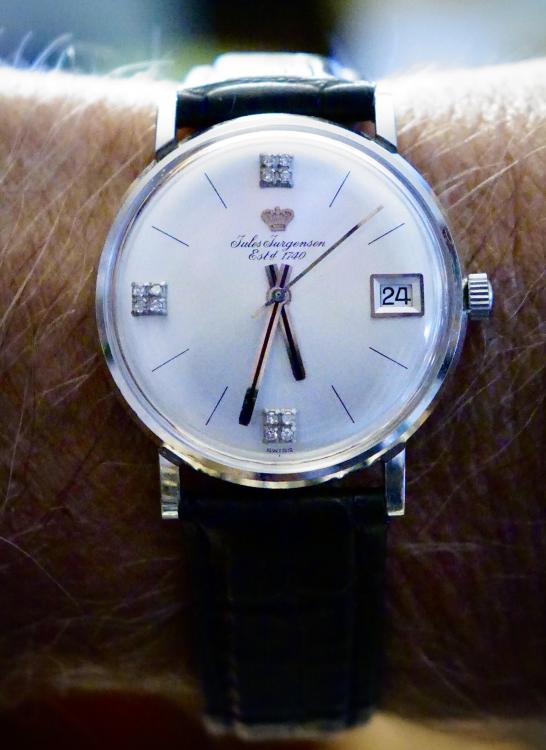



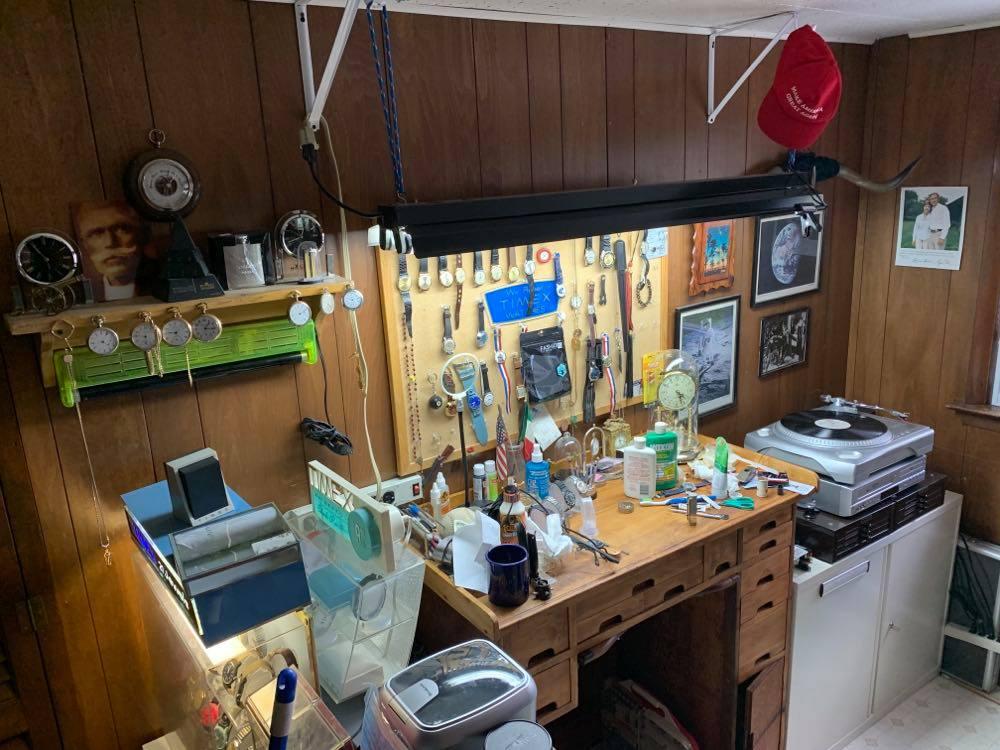


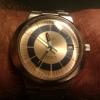




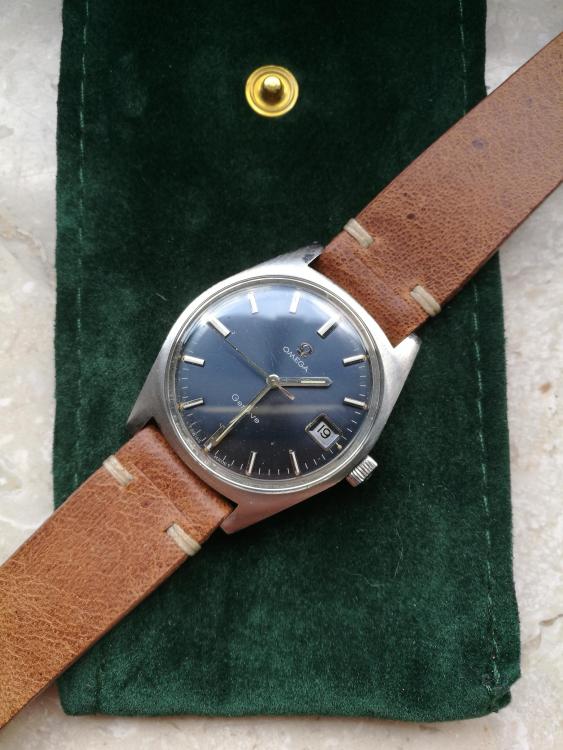
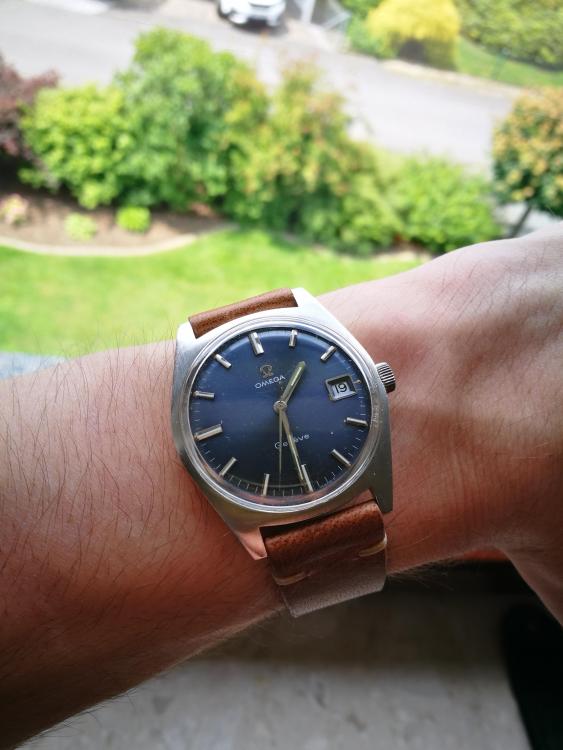
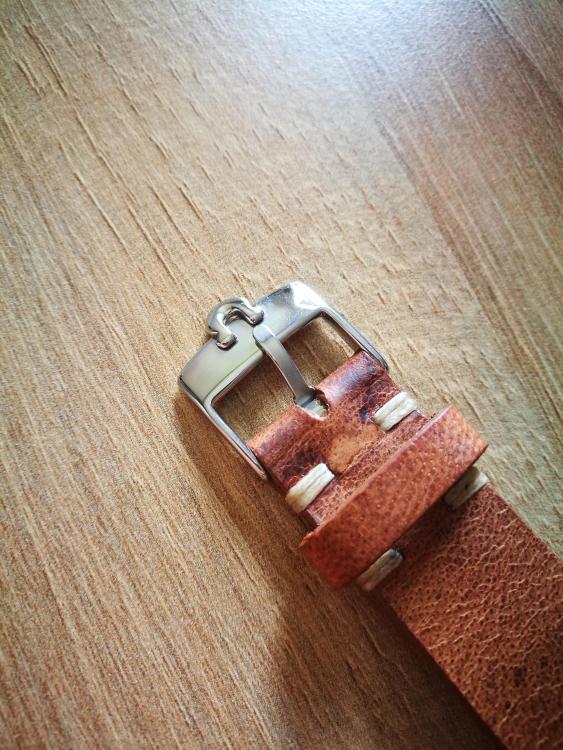
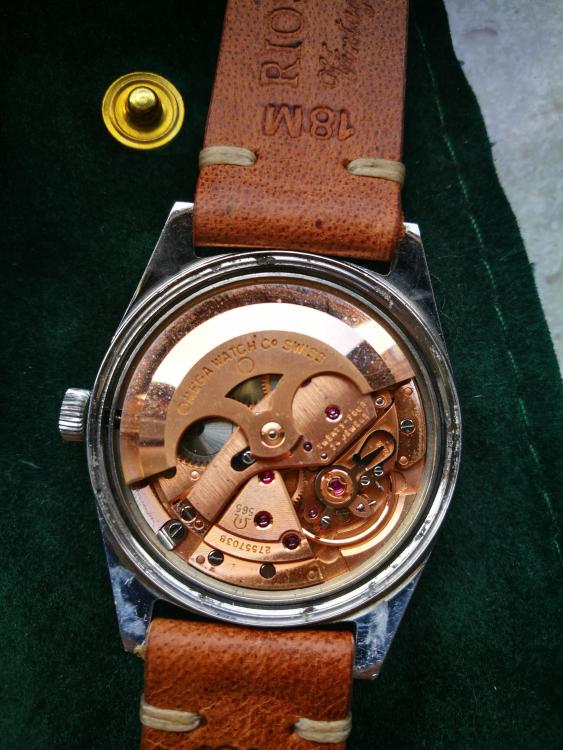
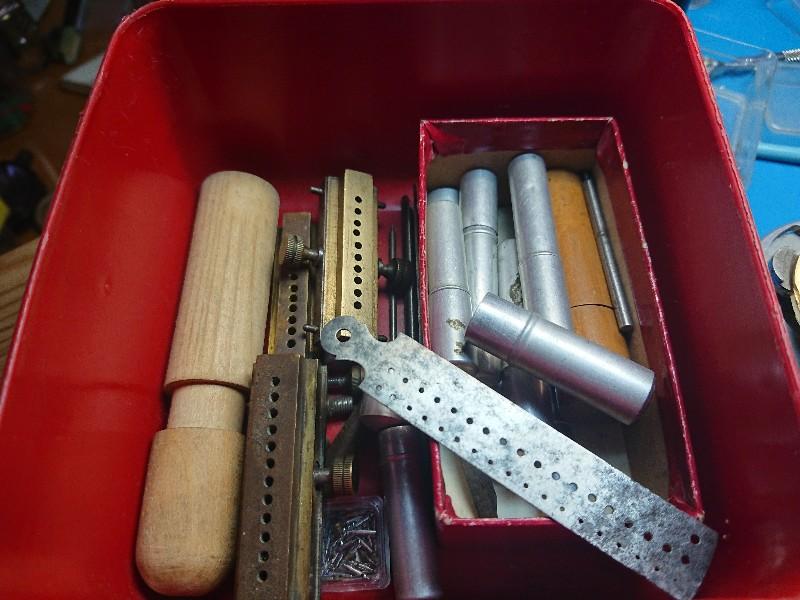
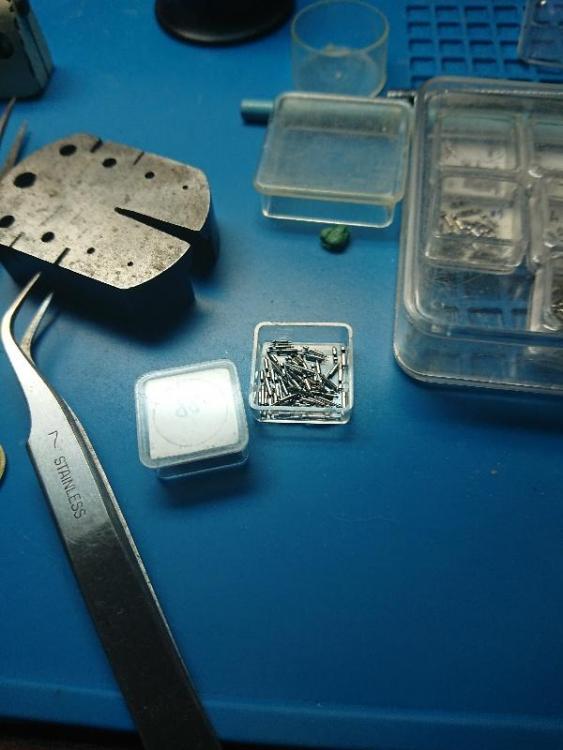

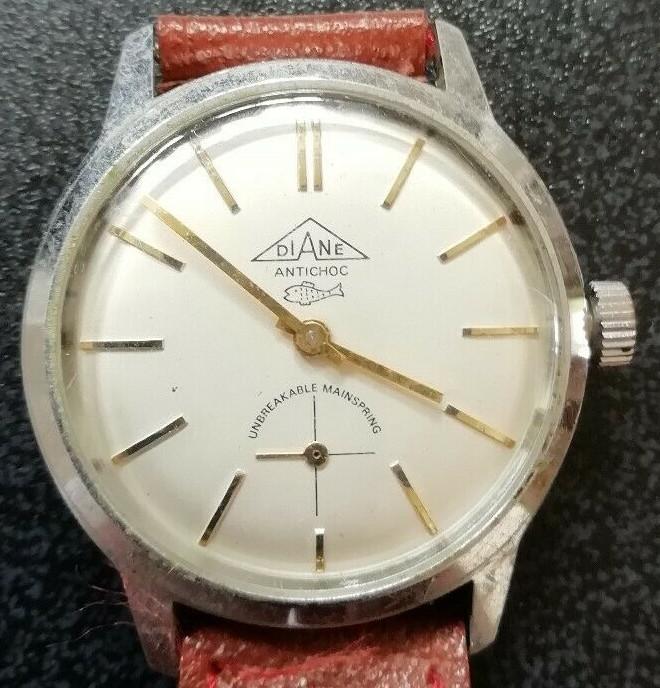

.thumb.jpg.d8346cb4a040f978aa611297e780c7a7.jpg)
01.thumb.jpg.497dc67ba6718eadcf5135ac2b472b64.jpg)